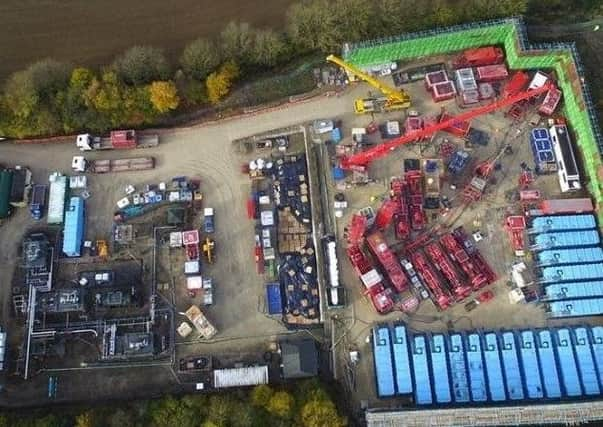Opinion: Responding to concerns about shale gas activity


My opponent, Mr Hill, has every right to express his opinion, of course, but should not be considered an expert in the field of oil and gas exploration. He is, by his own account, a Chartered Electrical Engineer, an anti-fracking campaigner and a single-issue parliamentary candidate in Fylde in 2015.
During the debate in Pickering, Mr Hill did make some relevant points about the proactive oversight of shale gas operations by the Environment Agency, which I have raised with ministers and regulators on many occasions over the last two years. Although our specialist scientists and engineers at the Royal Society , British Geological Survey (BGS), Chartered Institute Water and Environmental Management and the Environment Agency (EA) agree that, generally, we “have the right regulatory controls in place”, I am pressing for a number of changes, so that we can be confident that the stringent procedures are being followed. These include a minimum number and frequency of on-site inspections. Although independent monitoring of air, groundwater and seismicity is being carried out at Kirby Misperton by the scientists at the BGS, the rules generally require that operators themselves carry out this monitoring; I believe this responsibility should be transferred to the EA, funded by the operator.
Advertisement
Hide AdAdvertisement
Hide AdI have also worked closely with North Yorkshire County Council and the North York Moors National Park to make sure we have suitable landscape protections. On well-pad density, the NYCC/NYM Minerals and Waste plan is undergoing an ‘Examination in Public’ which, if approved, will prohibit any surface developments in our National Park, Areas of Outstanding Natural Beauty, Sites of Special Scientific Interest, will place further restrictions in a 3.5km buffer zone around these areas and restrict proliferation everywhere else to 10 well-pads per 100 square kilometres. This would mean that pads would be, on average, three miles apart. This might seem quite a lot but please bear in mind that three of the nine conventional pads that have been operating in Ryedale for over 20 years at Marishes, Kirby Misperton and Pickering Showground are around 2.5 miles apart, largely without anyone noticing their presence. Similar to a conventional site, a fracked well-pad has practically zero visual impact from the ground.
Well-pad density
restrictions are not yet part of nationwide regulations, but I am pressing for these to be adopted nationally and am pleased that the Housing, Communities and Local Government Select Committee I sit on has accepted my recommendation for an inquiry.
There is no doubt that traffic movements, light and noise pollution are significant problems for local communities for the 18 to 24-month period in which drilling activities are taking place. That is why I believe that at least some of the significant community financial benefits, which could total up to £12m over a 20-year life span of a well pad, should be paid directly to local households.
I absolutely believe that renewables are the future and that we need to invest heavily in green energy. Shale gas should not be considered to be an alternative to investment in renewable energy. Readers may be interested to know that the UK achieved fifth place in the 2018 Climate Change Performance Index, ahead of Germany, France, Denmark and many others. To quote Gareth Redmond-King, head of energy and climate change from the World Wildlife Fund “2017 has been an amazing year for renewable electricity in Britain; we have never been cleaner or greener – and we are on course for an even better year in 2018”. I am fully committed to the position that we always need to do more, however – despite the huge investments we have made, renewables will still only provide around 15% of our energy by 2020 , so we also need a cleaner fossil fuel so that we can meet our historic commitment to move away from the dirtiest and most deadly fossil fuel, coal, completely by 2025.
Advertisement
Hide AdAdvertisement
Hide AdGas will play an important part of our energy mix for some decades to come. We currently import around 45% of our gas and this figure will rise to 70% by 2030. Norway is by far our largest supplier, followed by Belgium and the Netherlands, but we have an increasing reliance on Qatar and Russia, particularly for Liquefied Natural Gas.
I believe that most people do recognise that we cannot divorce national needs from local priorities, but do realise that many of my constituents have concerns about fracking. I am, however, also regularly contacted by others who do support development, understandably, those in favour do not always feel comfortable speaking out in public meetings. Many people on social media have referenced a survey of my Conservative members I carried out in 2016 which received 162 responses, 81% being in favour. Whilst I recognise that this poll is not representative of the entire constituency, I do not have the means to undertake such an exercise. However, this constituency has, almost exclusively, been a Conservative seat, so it does at least illustrate that there is a significant, if largely publicly silent, proportion of people who do feel that we should at least cautiously explore this opportunity. Should exploration prove incompatible with required protections for the environment and landscape, I will oppose it.